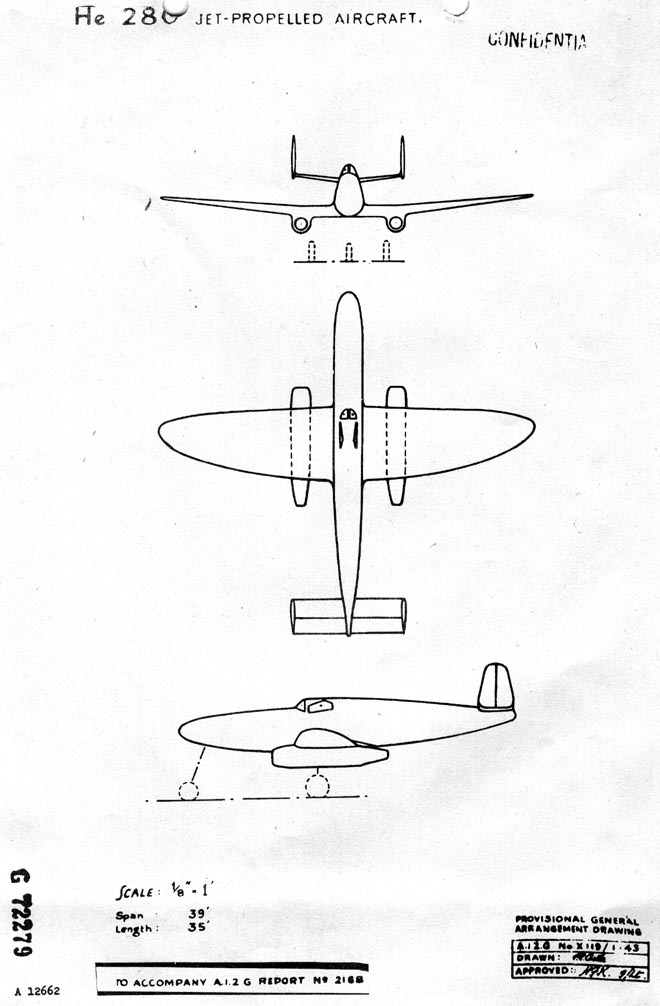|
If you can see this text here you should update to a newer web browser Normal | Highlight & Comment Comments/corrections will appear in yellow like this |
Distribution:To all units ashore and afloat concerned with aircraft. NEW GERMAN AIRCRAFT DEVELOPMENT PART I PART II PART III
PART I GERMAN USE OF ROCKET PROPELLED PROJECTILES Recent reports have been received describing encounters with various types of German fighters which appear to be equipped with weapons firing shells of considerably larger caliber than the conventional 20 mm. It is probable that these aircraft were fitted with rocket-launching equipment. One such report mentions an encounter with several enemy aircraft described as having a wing span of about forty feet, with the rounded tips of the wings painted red. These aircraft were very fast in level flight, but appeared to have a rather slow rate of climb. Their armament was reported to be one long-barreled cannon and two machine-guns in each wing. The muzzle flashes of the cannon were about twelve feet in length and the projectile bursts were about twice as large as the bursts of ordinary flak. It was reported that only two or three rounds were fired by individual aircraft, with approximately a three-second interval between rounds. Comments on this new weapon include the following statements: (1) "Some of the enemy aircraft stood off at a distance of over 1,000 yards and fired shots at the leading group. The bursts of these shells were much larger than those of 20 mm shells." (2) "Twin-engine aircraft stood out of range of our aircraft and fired broadsides at the Fortresses." (3) ". . . . reports that some Fw 190's had no outboard cannon but did have two inboard cannon which, when fired, shot out flame about four feet, compared with the usual type which throws flame about two feet." |
|
U.S. CONFIDENTIAL - BRITISH SECRET Definite information on the propulsion system is lacking and the table below gives an approximation of possible speeds:
|
|
U.S. CONFIDENTIAL - BRITISH SECRET 
|
